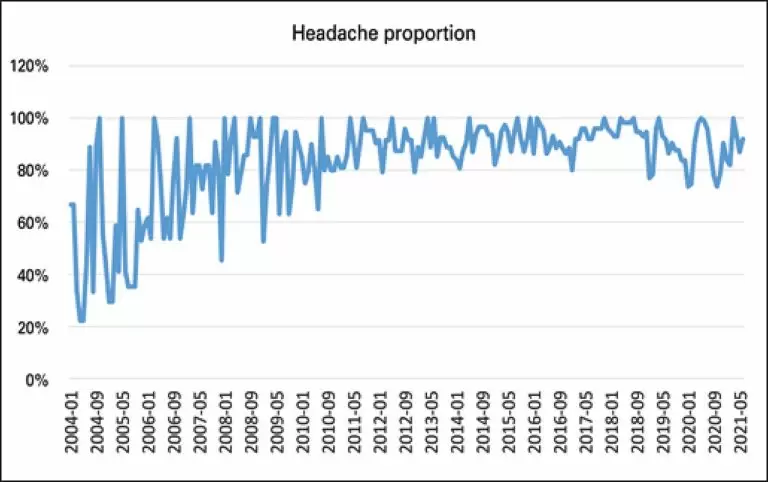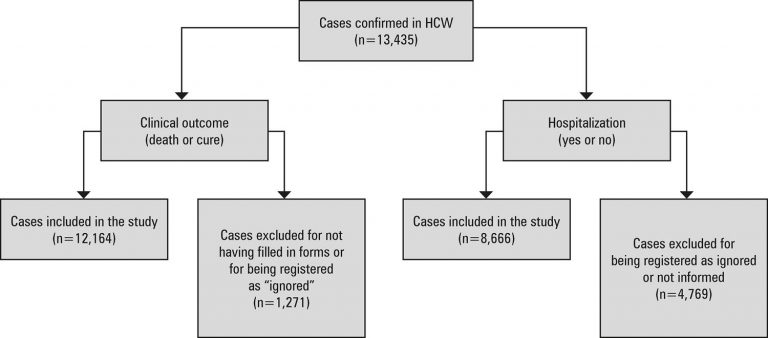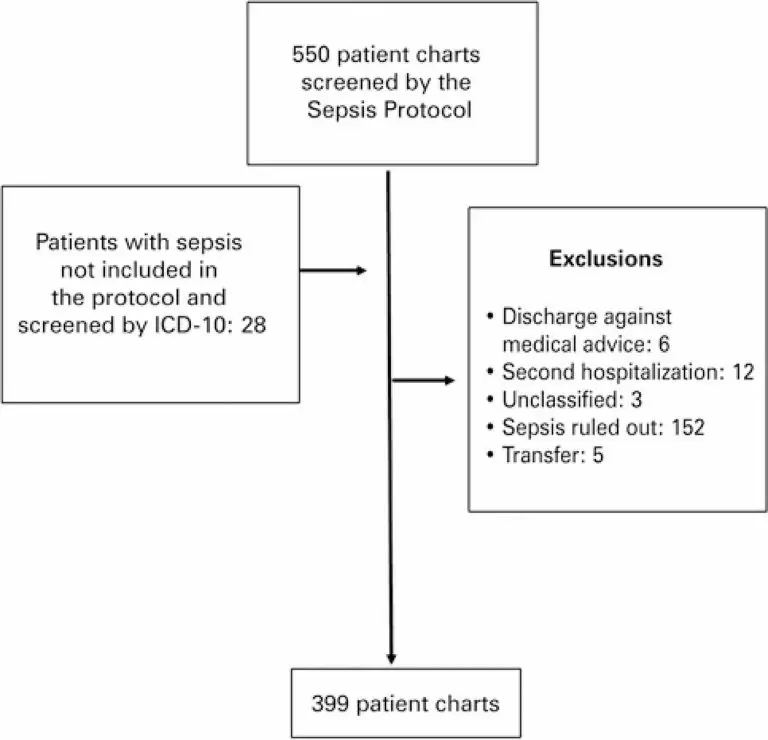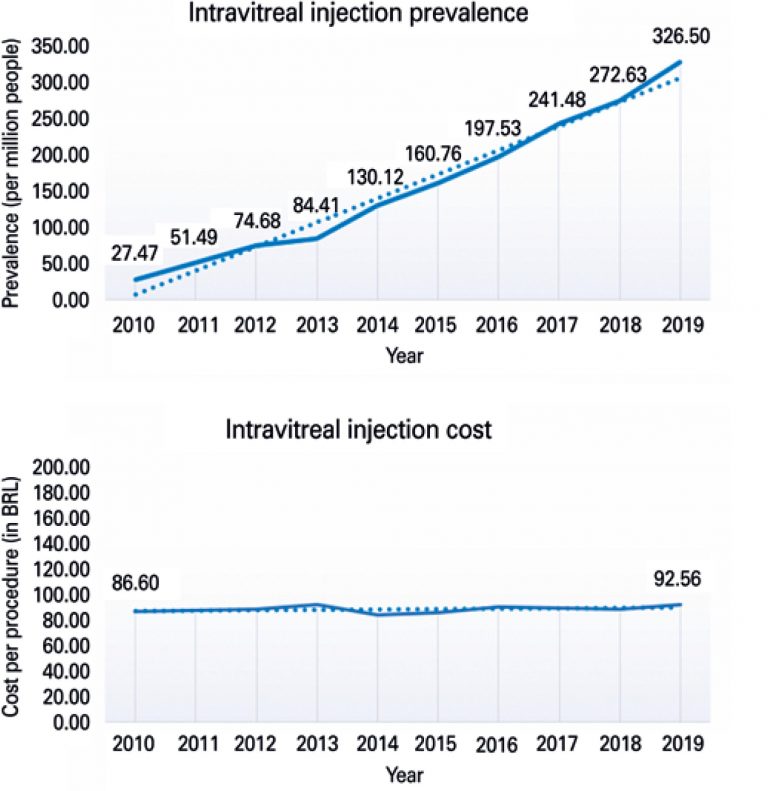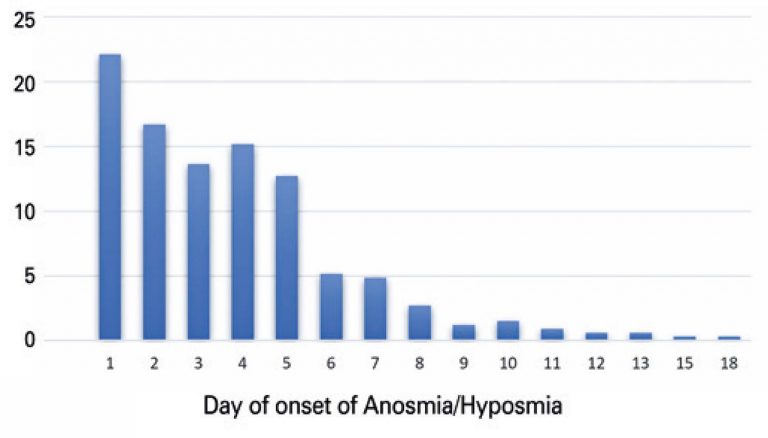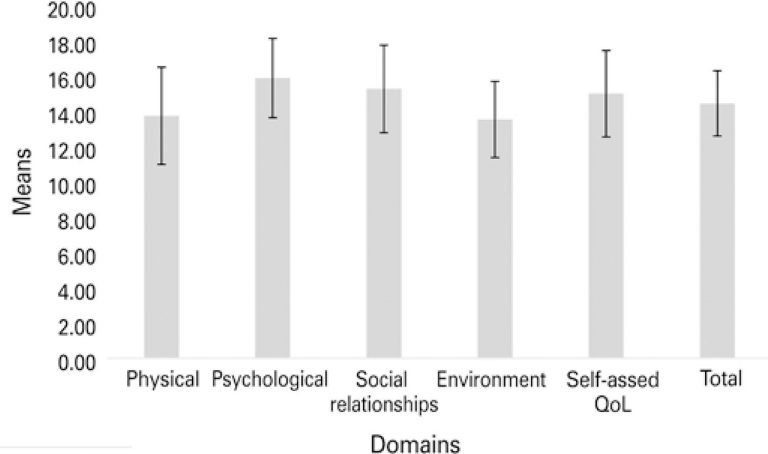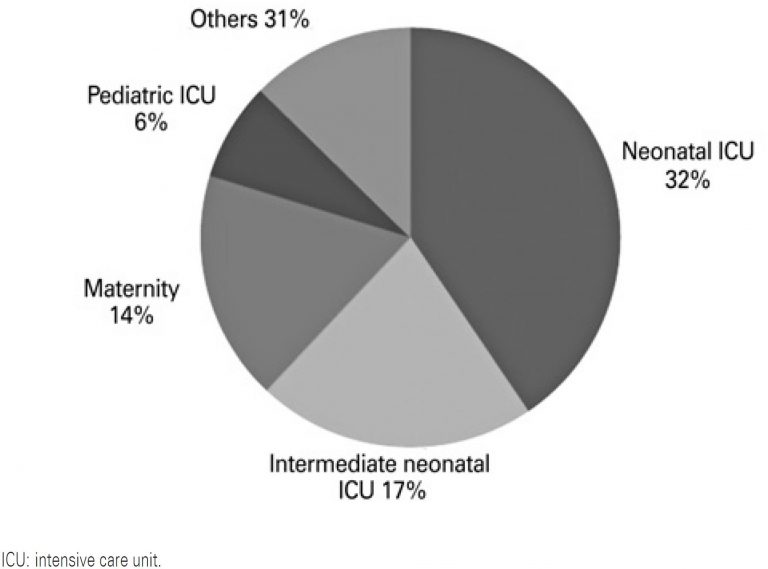25/Apr/2022
Headache and rhinitis: pattern search on Google Trends for 17 years
einstein (São Paulo). 25/Apr/2022;20:eAO6224.
View Article25/Apr/2022
Headache and rhinitis: pattern search on Google Trends for 17 years
DOI: 10.31744/einstein_journal/2022AO6224
ABSTRACT Objective Headache and rhinitis are highly prevalent and comorbid. The objective of the present study is to analyze the correlation of headache and rhinitis, in addition to the temporal pattern of these diseases in 17 years, using the Google Trends platform. Methods Google Trends was searched from January 2004 to June 2021, using the entry: [“rinite” (rhinitis) + “dor de cabeça” (headache)” + “Alzheimer” + “enxaqueca” (migraine)]. Migraine, primary headache, and Alzheimer’s, with no clear relation with headache, were […]
Keywords: Alzheimer disease; Big data; Epidemiology; Headache; Migraine disorders; Rhinitis
04/Mar/2022
COVID-19 in healthcare workers in the state of Espírito Santo, Brazil: clinical and sociodemographic characteristics associated with death and hospitalization
DOI: 10.31744/einstein_journal/2022AO6241
ABSTRACT Objective To analyze clinical and sociodemographic characteristics associated with death and hospitalization of healthcare workers due to COVID-19, in addition to calculating the incidence rates per profession. Methods A cross-sectional observational study using secondary open data from the State Health Department of Espírito Santo (ES), Brazil. The cases of COVID-19 in healthcare workers were recorded between February 27 and August 17, 2020, in Espírito Santo, excluding cases with missing information. Results Of the confirmed cases, 75.6% (n=9,191) were female. […]
Keywords: Brazil; Coronavirus infections; COVID-19; Epidemiology; Health personnel; Occupational Health; SARS-CoV-2
23/Feb/2022
Epidemiology and treatment of sepsis at a public pediatric emergency department
DOI: 10.31744/einstein_journal/2022AO6131
ABSTRACT Objective To describe the clinical characteristics and treatment of children with sepsis, severe sepsis, and septic shock at a pediatric emergency department of a public hospital. Methods A retrospective, observational study. The medical records of patients included in the hospital Pediatric Sepsis Protocol and patients with discharge ICD-10 A41.9 (sepsis, unspecified), R57 (shock) and A39 (meningococcal meningitis) were evaluated. Results A total of 399 patients were included. The prevalence of sepsis, severe sepsis, and septic shock at the emergency […]
Keywords: Child; Emergency medical services; Epidemiology; Infant; International Classification of Diseases; Length of stay; Patient discharge; Sepsis; Shock, septic
25/Nov/2021
Trends in treatment of retinal disorders in the Brazilian Public Health System over a 10-year period
DOI: 10.31744/einstein_journal/2021GS6616
ABSTRACT Objective: To investigate trends in terms of number and cost of intravitreal injection, photocoagulation and panphotocoagulation procedures performed by the Brazilian Public Health System, from 2010 to 2019. Methods: The Brazilian Public Health System Database was used as the primary source of data. Intravitreal injection, photocoagulation and panphotocoagulation procedures performed from 2010 to 2019 were investigated. Procedure prevalence and cost trends were analyzed according to year and region. Annual trends were examined using generalized linear models, with a significance […]
Keywords: Epidemiology; Health care costs; Intravitreal injections; Light coagulation; Public health surveillance; Retinal diseases/epidemiology
25/Oct/2021
Occupational psychosocial stressors and mental distress among healthcare workers during COVID-19 pandemic
einstein (São Paulo). 25/Oct/2021;19:eAO6281.
View Article25/Oct/2021
Occupational psychosocial stressors and mental distress among healthcare workers during COVID-19 pandemic
DOI: 10.31744/einstein_journal/2021AO6281
ABSTRACT Objective To analyze the factors associated with mental distress among health workers who cared for patients with a suspected or confirmed diagnosis of coronavirus disease 2019 (COVID-19). Methods A cross-sectional analytical study of national scope, carried out between in the second quarter of 2020. A total of 437 health professionals, who filled out an electronic form about sociodemographic data, occupational aspects, psychosocial characteristics of work and mental distress. Multiple logistic regression was performed to analyze the covariables associated with […]
Keywords: Coronavirus infections; Epidemiology; Health personnel; Mental disorders; Occupational Health
30/Sep/2021
Olfactory dysfunction in the scenario of COVID-19 pandemic in patients screened by the telemonitoring
DOI: 10.31744/einstein_journal/2021AO6204
ABSTRACT Objective To assess the clinical and epidemiological profile of patients with olfactory dysfunction in the scenario of COVID-19 pandemic. Methods The study selected patients with loss of smell, previously screened by telemonitoring system of the Municipal Health Department of Goiânia (GO), Brazil, who agreed to answer a questionnaire about COVID-19 symptoms and findings of exams. The interviews were conducted by six otolaryngologists, who applied the specific questionnaire, over the phone. Results A total of 13,910 patients underwent telemonitoring, and […]
Keywords: Coronavirus infections; Epidemiology; Olfaction disorders; Population health; Taste disorders; Telemonitoring
12/Aug/2021
Factors associated to quality of life in patients with leprosy
DOI: 10.31744/einstein_journal/2021AO5936
ABSTRACT Objective To evaluate quality of life and associated factors in patients with leprosy. Methods A cross-sectional study with 63 people diagnosed as leprosy, seen at a reference service for the disease in the southeastern region of Mato Grosso, Brazil. The questionnaire World Health Organization Quality of Life Bref was used to evaluate quality of life. Simple and multiple linear regressions evaluated the association between sociodemographic variables and quality of life domains. Results The highest mean of quality of life […]
Keywords: Epidemiologic factors; Epidemiology; Leprosy; Public health; Quality of life
02/Jun/2021
Medical care in clinical genetics: an experience of decentralization in southern Brazil
DOI: 10.31744/einstein_journal/2021AO5708
ABSTRACT Objective: To describe the population assisted in a genetics outpatient clinic, in a medium-sized town, with respect to diagnosis, type of inheritance, and local impact of genetic care. Methods: Medical records and genetic consultation forms from 2006 to 2018 were reviewed. The variables analyzed were age, sex, origin, current residence, reason for consultation, professional who requested evaluation, final diagnosis, additional exams and their results. Results: A total of 609 patients were seen, 65.9% aged 0 to 12 years. Genetic […]
Keywords: Epidemiology; Genetics, medical; Health services research; Hospitals, university; Public health
12/Aug/2020
Epidemiologic and clinical features of patients with COVID-19 in Brazil
DOI: 10.31744/einstein_journal/2020AO6022
ABSTRACT Objective This study describes epidemiological and clinical features of patients with confirmed infection by SARS-CoV-2 diagnosed and treated at Hospital Israelita Albert Einstein , which admitted the first patients with this condition in Brazil. Methods In this retrospective, single-center study, we included all laboratory confirmed COVID-19 cases at Hospital Israelita Albert Einstein , São Paulo, Brazil, from February until March 2020. Demographic, clinical, laboratory and radiological data were analyzed. Results A total of 510 patients with a confirmed diagnosis […]
Keywords: Communicable diseases; Coronavirus infections; Epidemiology; Lung diseases/epidemiology
03/Dec/2019
Prevalence of rectovaginal colonization by group B Streptococcus in pregnant women seen at prenatal care program of a health organization
einstein (São Paulo). 03/Dec/2019;18:eAO4920.
View Article03/Dec/2019
Prevalence of rectovaginal colonization by group B Streptococcus in pregnant women seen at prenatal care program of a health organization
DOI: 10.31744/einstein_journal/2020AO4920
ABSTRACT Objective To evaluate the prevalence of group B Streptococci in pregnant women of a corporate health program, as well as the epidemiological correlations. Methods This retrospective study used medical records of patients who participated of the prenatal care program at a private hospital in the city of São Paulo (SP), Brazil, from 2015 to 2016. Those who abandoned the program or had incomplete data in their medical records were excluded. Quantitative variables were described by means, standard deviations, median, […]
Keywords: Epidemiology; Pregnancy; Pregnancy complications, infectious/diagnosis; Prenatal care; Prevalence; Risk Factors; Streptococcus agalactiae; Viridans streptococci


